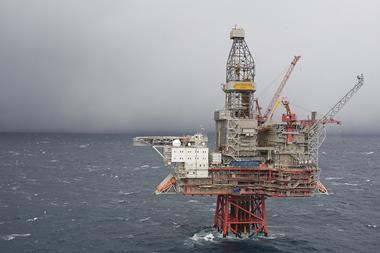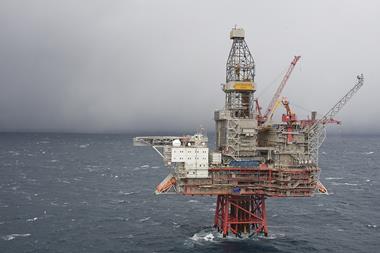Plans by the NOK8.5trn (€860bn) Norwegian sovereign wealth fund to sell off its investments in oil and gas stocks could trigger a “domino effect” among other large institutional investors, driving down real investments in the sector, according to analysts.
Norges Bank Investment Management (NBIM), which runs the Government Pension Fund Global (GPFG), wrote to Norway’s Ministry of Finance last month recommending the removal of oil and gas sectors from its benchmark index.
GPFG is one of the world’s largest equity investors. Oil and gas equities made up about 6% of the GPFG’s benchmark index or just over NOK300bn, Norges Bank said, and 4% of GPFG’s investment portfolio.
“There could be some domino effects on other mega-funds even though NBIM obviously has special reasons to hedge against more volatile oil prices,” said Per Magnus Nysveen, senior partner and head of analysis at the Oslo-based consulting company Rystad Energy.
“If investors pull broadly out of oil, real investments will go down and oil supply will weaken,” he added. “This would exacerbate the risk for future undersupply driving up oil prices in the longer term. Such imbalances could hurt the still fragile global economy.”
Analysts pointed to other oil-rich sovereign wealth funds (SWFs) in the Gulf region with a similar risk profile as the Norwegian fund, such as the Kuwait Investment Authority and the Saudi Arabian Monetary Agency.
“One shouldn’t be surprised to see SWFs in petroleum-rich nations seeking to mitigate the nations’ overall exposure to commodity prices. The planned IPO of Saudi Aramco is an example of this,” said Gudmund Hartveit, an equity analyst at Oslo-based Fearnley Securities.

However, Hartveit said he did not expect a “broad exit” from oil and gas related stocks from other SWFs, which could look at investing in other areas within the sector.
“The investment space within oil and gas also includes sectors that have a varying correlation with commodity prices, such as refineries, service providers and liquid natural gas carriers,” he said.
In the letter, Øystein Olsen, chairman of Norges Bank, and Yngve Slyngstad, chief executive of NBIM, wrote that “vulnerability” of the fund to a permanent drop in oil prices would be reduced if it was not invested in the sector.
Abhishek Kumar, senior energy analyst at Interfax Energy’s Global Gas Analytics in London, said Norway had already reduced its exposure to firms involved in coal, so a similar move for its oil and gas portfolio was expected.
“Norway will, however, remain vulnerable to the oil market through its untapped offshore hydrocarbon reserves as well as [its] stake in Statoil,” said Kumar.
He added the move to boost its investment in other sectors could support the country’s growing appetite for renewables.
Fearnley’s Hartveit noted that, as of end-2016, the GPFG held equities in 379 companies classified as oil and gas stocks, with the average ownership interest around 1%, and ownership interest exceeding 3% for nine of the companies.
“Assuming that the divestments are conducted over a period of time, and reinvestments in other sectors are done accordingly, we believe an exit would not have material impact on the companies’ share prices,” he added.
Jason Kenney, an oil analyst at Santander, said the news was “further reason” to be cautious for oil companies relative to broader markets over coming one-to-three years, adding to likely moderated oil prices.
“Norway has to find supportive long-term investments to replace oil sector positions that can deliver value, and yield,” Kenney added. “The exit from, say, Australian and Canadian resource stocks could complicate some political relationships – but over time there will be alternative supports and different dialogue.”
See IPE Editorial Director Liam Kennedy’s latest column on Norway’s GPFG here.












No comments yet